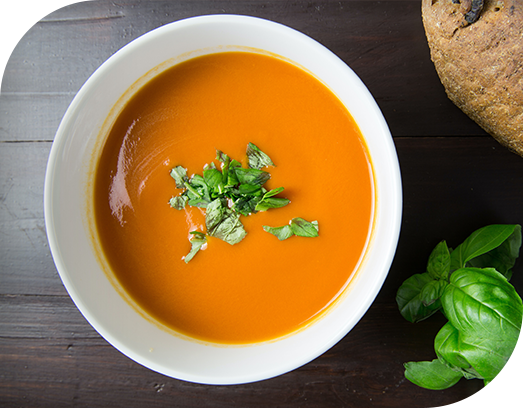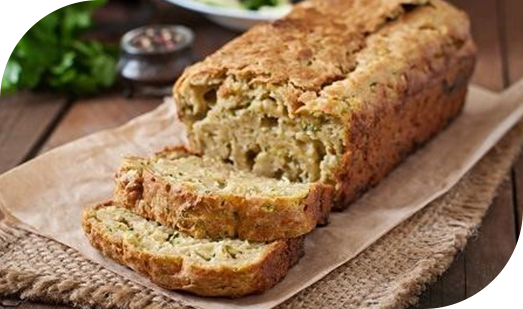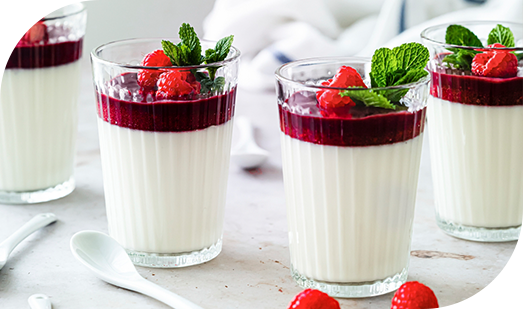Ayurveda: To be healthy, food must also taste good
It is something more – through it, people are charged with the life-giving energy of nature.

For this purpose, dishes should include all 6 tastes – salty, sweet, sour, bitter, tart and hot.
Among the recipes we find appetizers, soups, salads, main dishes, desserts and drinks.
Ayurvedic recipes to stimulate appetite and digestion
Traditional combinations to improve digestion are:
These include ginger powder, coriander, curry leaves, tamarind, fenugreek seeds, cumin, mint, etc.
Ayurvedic soup recipes
Rassam Soup
1. Heat some Ghee in a pan and fry a teaspoon of mustard seeds in it on a moderate flame.
2. When it starts to crackle, add a small chilli, a teaspoon of turmeric, 2-3 pinches of asafoetida and 7-8 curry leaves.
3. Fry for ten seconds, pour in the tomatoes and mix well. After about 2 minutes, dilute with water to make a thin soup.
4. Add half a tablespoon of tamarind paste and salt, then simmer until the tomatoes break down.
5. Sprinkle with coriander, which is cooling.
For Pitta dosha, chili pepper and asafoetida should be omitted, and mustard seeds should be reduced by half.

Sambar Soup
1. 1.5 tea cup tur dal is soaked overnight.
2. Pour 3-4 tea cups of water into a pot to boil and add two pinches of asafoetida, half a teaspoon of turmeric and dal.
3. As it boils, the foam is removed. Simmer the dal on low heat until soft, without boiling.
4. Heat ghee in a saucepan over low heat and fry a teaspoon each of cumin and mustard seeds, half a teaspoon of cumin, 2 pinches of asafoetida, and about a dozen curry leaves for about twenty seconds.
6. Everything is mixed to get it oiled. Close with a lid and leave on low heat for 5 minutes.
7. Then add a tablespoon of sambar masala and 3 tablespoons of tamarind paste. Salt and mix.
8. Pour about a centimeter of warm water and leave for a few minutes under a lid on low heat so that the vegetables do not soften. They are added to the dal and more water is added, but not too much – it should be slightly thick.
Ayurvedic recipes for bakery products
They can be made from wheat or corn flour, tapioca, rice, millet, etc.
They can be salty or sweet, with a variety of vegetable fillings.

Chapatis and Pratas
1. Wholemeal flour is used, and two tea cups are needed.
2. They are mixed with a quarter teaspoon of salt. Knead with lukewarm water for a few minutes until a soft, non-sticky dough is obtained. It stays like this for about twenty minutes.
3. Then the dough is made into walnut-sized balls, sprinkled with flour and rolled into thin circles with a diameter of fifteen centimeters.
4. The cakes are placed in a preheated pan and turned every 7-8 seconds, drawing spirals on them until they puff up. They are then spread with the purified Ghee oil.
This bread also has a variant with filling – Pratas. It uses a lot of Ghee and the filling can be spinach, fresh cheese, potatoes, a combination of vegetables.
Dosa and Pesarattu
It is fried with a mixture of many vegetables and spices.
A type of pancake – pesarattu – is also common in the southern parts. It uses mung dal beans, finely chopped chillies, onions, coriander leaves and ginger root.
It is most often served with coconut or tamarind chutney.
Ayurvedic drinks
As drinks, Ayurvedas use various fruit juices, vegetable juices and teas with spices:
For additions to tea, milk, cardamom, cloves, dry ginger, etc. are popular.
Ayurvedic milk recipes
• If ginger powder and turmeric are added to boiled milk with sugar, it can be used for sore throat.
• Milk with almonds and sugar gives strength. In fact, in general, boiled milk is easily digested and boosts immunity, especially if used with herbs.
• Water buffalo milk helps with insomnia, but it is heavy and makes digestion difficult.
• Raw milk is also heavy, but adding turmeric and dried ginger can make it easier to digest.
Ayurvedic dessert recipes
They are usually fried and soaked in syrups, but there are also quite a few milk-based desserts.
Generally, a lot of almonds, nutmeg and cardamom are used.
Fruits, vegetables, or combinations of these can also be added.


